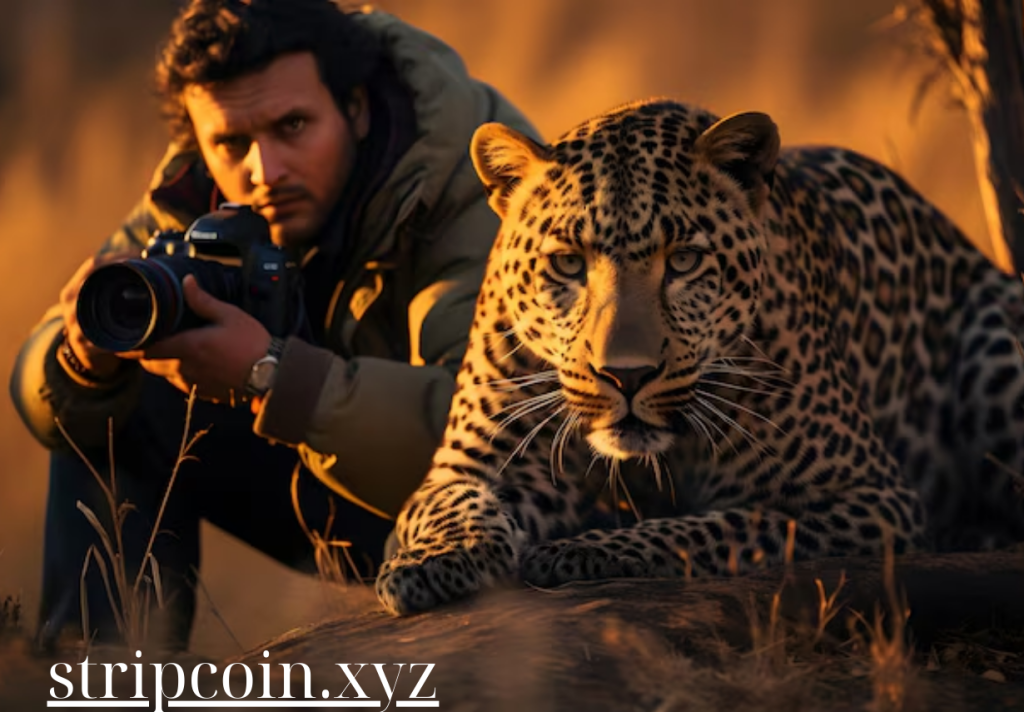Wildlife Encounters
Wildlife Photography Tips: Capture Stunning Images of Nature’s Majestic Creatures
Wildlife photography is a thrilling and rewarding pursuit, offering the chance to capture breathtaking images of animals in their natural habitat. However, it also presents unique challenges, requiring patience, skill, and the right equipment. From elusive big cats to soaring birds, photographing wildlife demands a combination of technical expertise and a deep understanding of animal behavior.
In this article, we’ll explore essential tips for capturing stunning images of nature’s majestic creatures, helping you create powerful and memorable wildlife photos.
1. Choose the Right Equipment
Wildlife photography requires specialized gear to capture animals in varying conditions and from a distance. Here’s a breakdown of key equipment you’ll need:
- Telephoto Lens: A telephoto lens (200mm to 600mm or longer) is essential for photographing animals from afar without disturbing them. A longer focal length allows you to zoom in on your subject while maintaining a safe and respectful distance.
- Fast Shutter Speed: Wildlife moves quickly, so a camera capable of shooting at fast shutter speeds (1/1000 or higher) is ideal to freeze motion and capture sharp images.
- Tripod or Monopod: A sturdy tripod or monopod helps stabilize your camera, especially when using heavy lenses or shooting in low light conditions.
- Silent Mode: If your camera has a silent mode, use it to minimize noise that could startle your subject.
2. Master Exposure Settings
Mastering your camera’s exposure settings—aperture, shutter speed, and ISO—can significantly improve the quality of your wildlife photos:
- Aperture (f-stop): A wider aperture (lower f-stop, such as f/2.8 or f/4) creates a shallow depth of field, making your subject stand out against a blurred background. This effect is particularly useful for isolating animals from their surroundings.
- Shutter Speed: Fast-moving animals require fast shutter speeds to avoid motion blur. For birds in flight or running animals, aim for at least 1/1000 second or faster.
- ISO: In low-light situations, increasing your ISO can help you maintain a fast shutter speed without underexposing your shot. However, be cautious not to raise it too high, as this can introduce noise to your images.
3. Know Your Subject’s Behavior
Understanding the behavior and habits of the animals you’re photographing is crucial for capturing compelling shots. Research the species in advance to learn about their feeding, hunting, and migration patterns. Here are a few tips:
- Timing: Many animals are more active during early morning or late afternoon, making these the best times for wildlife photography. The soft, golden light during these hours also creates more visually appealing photos.
- Patience: Wildlife photography often involves waiting for long periods to capture the perfect moment. Be patient and allow the animals to behave naturally—don’t rush or disturb them.
- Observation: Watch for signs of animal behavior that might lead to action shots, such as birds about to take flight or predators stalking their prey. Anticipating these moments will help you prepare for the shot.
4. Focus on the Eyes
In wildlife photography, focusing on the eyes of your subject is critical. Sharp, well-lit eyes convey emotion and draw the viewer into the image. Here are some tips for ensuring you get the focus right:
- Use Single-Point AF (Auto Focus): This allows you to place the focus exactly on the animal’s eyes, ensuring that they are the sharpest point in the image.
- Continuous Autofocus Mode: In dynamic wildlife scenes, use continuous autofocus (AF-C or AI-Servo) to track moving animals and keep them in focus as they shift positions.
- Focus Peaking: If your camera has focus peaking, use it to ensure that your subject’s eyes are sharply focused when shooting in manual focus mode.
5. Composition Matters
Great wildlife photography isn’t just about capturing the animal—it’s about creating a visually interesting composition. Use these composition tips to elevate your photos:
- Rule of Thirds: Imagine your frame divided into a 3×3 grid. Place your subject at one of the intersections or along the grid lines, rather than in the center, to create a more dynamic composition.
- Leave Space for Movement: If your subject is moving or looking in a particular direction, leave more space in front of it than behind to give a sense of motion and direction in the image.
- Use the Environment: Incorporating the animal’s natural environment can add context to your shot. Look for ways to frame the subject with elements like trees, water, or mountains to create a more complete story.
6. Play with Light
Lighting is one of the most important factors in photography, and wildlife is no exception. Knowing how to use light to your advantage can dramatically improve your photos:
- Golden Hour: Shooting during the golden hour (shortly after sunrise or before sunset) provides soft, warm light that enhances the colors and details of your subject.
- Backlighting: Shooting with the sun behind your subject can create striking silhouettes or rim lighting that highlights the edges of the animal’s fur or feathers.
- Fill Flash: In harsh midday light, using a fill flash can soften shadows and bring out details in your subject. Just be careful not to disturb or scare the wildlife with too much flash.
7. Respect the Wildlife and Environment
Ethics are a key part of wildlife photography. Always prioritize the well-being of the animals and their habitat over getting the shot. Here are some ethical guidelines:
- Keep a Safe Distance: Use long lenses to avoid approaching animals too closely. Don’t disturb or harass them for a better shot—this can cause stress and alter their natural behavior.
- Don’t Bait or Lure Animals: Never use food or other methods to lure wildlife into a photo opportunity. This disrupts their natural behavior and can lead to dependence on human food sources.
- Stay on Trails: In natural reserves or protected areas, stay on designated paths to avoid damaging sensitive ecosystems or disturbing wildlife.
8. Capture the Action
Some of the most captivating wildlife photos are those that capture an animal in motion. Whether it’s a predator pouncing on its prey or birds soaring in the sky, action shots bring drama and excitement to your portfolio. Here’s how to do it:
- Use Burst Mode: Switch to continuous shooting mode to capture multiple frames per second, increasing your chances of getting the perfect shot during fast-paced action.
- Panning: For animals on the move, panning (moving your camera along with the subject) can help convey a sense of speed and motion. Use a slower shutter speed to blur the background while keeping the subject sharp.
9. Be Creative with Perspectives
While eye-level shots are often the most engaging, experimenting with different perspectives can lead to unique and creative images:
- Get Low: Shooting from a lower angle can make animals appear more majestic and emphasize their environment. This perspective is particularly effective for photographing larger animals like elephants or lions.
- Aerial Views: If you have access to drones or can photograph from an elevated vantage point, use this perspective to capture wildlife in a way that showcases the landscape around them.
10. Post-Processing for Perfection
Post-processing is an important step in wildlife photography. It allows you to fine-tune your images and enhance colors, sharpness, and details. Here are some tips for editing wildlife photos:
- Adjust Exposure and Contrast: Fine-tune the exposure to ensure your subject is well-lit, and adjust the contrast to make the animal stand out from the background.
- Sharpen Details: Use sharpening tools to bring out the fine details in fur, feathers, or scales, ensuring that your subject looks crisp.
- Respect the Natural Look: Avoid over-processing your images. Keep colors and lighting as natural as possible to maintain the authenticity of the wildlife scene.
Conclusion
Wildlife photography is both a challenge and an adventure, requiring technical skills, patience, and respect for nature. By mastering your equipment, understanding animal behavior, and applying creative techniques, you can capture stunning images of the natural world. Remember that the best wildlife photographs tell a story and evoke emotion, offering viewers a glimpse into the majesty of nature and the creatures that inhabit it.

